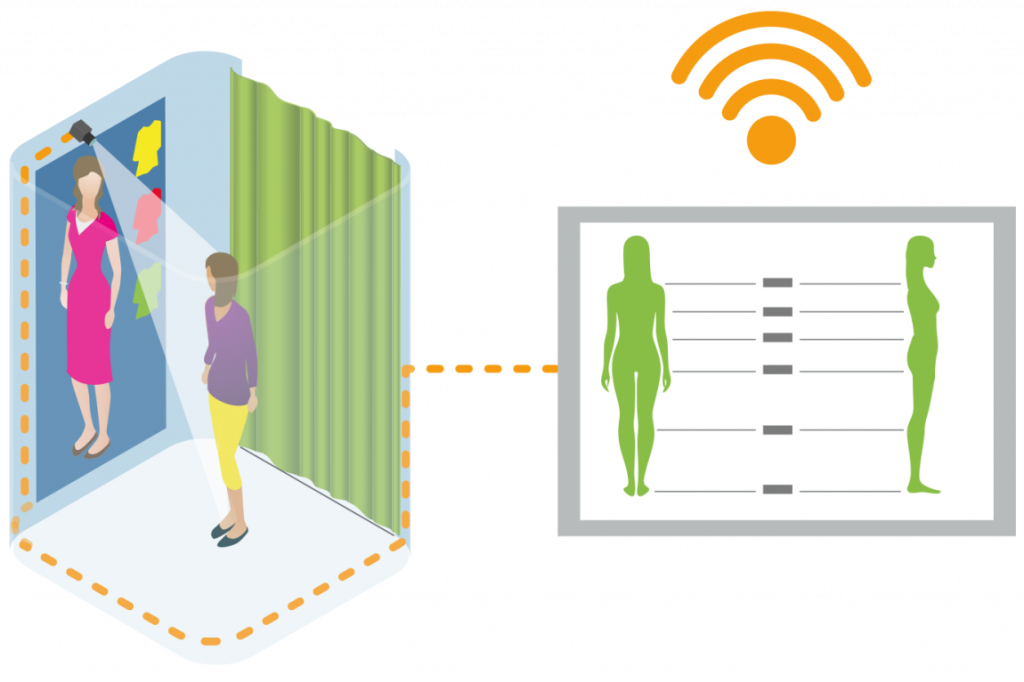This blog post was originally published at Basler's website. It is reprinted here with the permission of Basler.
Looking for a new pair of pants? Right now you're likely to go to a store or order a pair online in a standardized size, typically one of four variants ranging from S to XL. Low unit costs are achieved through mass production.
Textile production in the world of Industry 4.0 may instead deliver customized individual pieces by taking advantage of efficient data processing. Once a customer decides on a model, their dimensions could be determined via an image processing system (machine vision system).
This might take the form of a small changing room with four cameras to take a picture of each side of the body. Software handles the measurements and the subsequence cutting pattern for production. The remainder of production runs automatically right up through shipping.
Fashion houses of the future will thus no longer sell their services based around full shelves with huge offerings, but rather through a large virtual selection and quick, reliable production.

How Industrial Camera Systems Can Turn the Visions of Futuristic Production Processes into Reality
Image processing systems built around industrial cameras are already an essential component in automated production. Throughout all steps of production, from the inspection of raw materials and production monitoring (i.e. flaw detection) to final inspections and quality assurance, they are an indispensable part of achieving high efficiency and quality standards.
The term Industry 4.0 stands for new process forms and organization of industrial production. The core element is networking and extensive data communication. The goal is self-organized, more strongly customized and efficient production based on comprehensive data collection and effective exchange of information.
Image processing can play a decisive role here in determining specific information. One important point is that cameras continue to grow smaller and more affordable, even as performance improves.
Where complex systems were once required, today's small, efficient systems can produce the same results… or better. This technological progress, taken together with the possibilities of ever-expanding networking, opens up the potential for new applications in Industry 4.0.

New Opportunities for Small Batches
One important effect of Industry 4.0 is the fact that due to using control automation many work pieces can be produced cost-effectively not just in large quantities, but also in much smaller lots — a 'batch size of 1' is the buzzword here. One example of this comes in the production of textiles mentioned above; another might be in the production of individually designed metal pieces to customer spec, such as post boxes or railings.
But how can precise industrial camera systems support in this effort?
It's conceivable for example that this kind of system might be used for the coating of newly produced metal parts. Automatic spray nozzles normally work based on pre-programmed painting movements. Such pre-programmed movements are difficult to plan in advance for custom work. Determining them from design specs could be possible in principle. However, to calculate the final spray pattern is highly complex and imprecise. Industrial cameras by contrast can make precise measurements of the component on the spot, determining its individual shape and position and instructing the spray arms accordingly. At the same time, the painting results can also be controlled optically, either through assessment of the coloring or by measuring more complex reflective properties on the coating. This control data can flow in real time into the control unit. As such, a system for automated coating can become a self-learning system. New but similar components could then be processed more efficiently based on the prior experience.

Cameras as Tireless Process Auditors
Sensor data can also help with early detection of changed or even flawed device behavior, leading to automated countermeasures (such as changes to process parameters or ordering of replacement materials and/or service calls). This applies both to the production equipment as well as for the finished products. Industrial cameras play a significant role in this, as they offer a tireless method for auditing the color, structural and geometric properties of even large workpieces and products for correctness or deviation. 'Soft' factors such as lubrication, wear and rusting can also be taken into account, providing data for a company's enterprise resource planning systems.

Image Processing in Production – Robots and Humans Working Hand in Hand
Production employees will also benefit from applications using industrial cameras. However far automation progresses, there are good reasons why there will always be a place for humans in industrial production. These include "human" sensory capabilities, flexibility and affordability.
Even so, future workflows will also be changing as part of Industry 4.0. Human efficiency can be enhanced through intelligent machine vision systems integrated into helmets, garments and tools. This is fully technically feasible, as cameras continue to grow smaller and lighter: high-precision industrial cameras the size of stamps, weighing less than 30 g including lens and casing, are already available today. These vision systems record the activity and work status visually, audit results, identify sensible follow-on steps or information and forward it to humans, perhaps for example as notifications on smart glasses working with 'augmented reality.' This helps promote timely provision of working materials, further increasing productivity.

Summary
No matter how 'Industry 4.0' is defined at present, image processing will play an important role in future production and business processes. It is expected to ensure:
- New and more efficient business models through applications using image processing systems
- Automated, self-organized production based on extensive data collection and visually identified information
- More efficient production through extensive networking of vision systems in operational processes.


